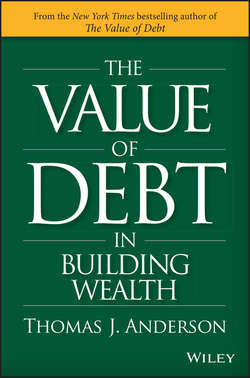Читать книгу The Value of Debt in Building Wealth - Thomas J. Anderson - Страница 11
На сайте Литреса книга снята с продажи.
Chapter 1
The Traditional Glide Path
Break the Paycheck-to-Paycheck Cycle
ОглавлениеMoney flows into every household like water through a hose. When all is well, it flows freely and abundantly. But a kink in the hose (loss of a job, a serious medical condition, even a natural disaster) could stop the flow. If you haven't been storing water in cisterns, you and your family will be parched and in peril.
Too many Americans are in exactly that position. According to one survey, 76 percent of Americans live paycheck to paycheck, fewer than one in four has enough money saved to cover at least six months of expenses, and 27 percent have no savings at all.7 A separate survey found that 46 percent of Americans have less than $800 in savings.8 The estimated collective savings gap for working households 25–64 is estimated to be between $6.8 trillion and $14 trillion. Two-thirds of working households age 55 to 64 have not saved more than one year's worth of salary.9 The well is not deep enough to sustain them through a crisis.
Is it possible the conventional wisdom that debt is bad has contributed to our savings gap? I believe our anti-debt mentality is contributing to the fact that we are dramatically under saved and ill prepared for crisis. I believe it's time to consider a new glide path and to break this cycle.
I believe there is a better, balanced, and simple way to accumulate wealth by using both sides of your balance sheet – your assets and your debts.
7
Angela Johnson, “76 % of Americans are living paycheck-to-paycheck.” CNN Money (June 24, 2013). http://money.cnn.com/2013/06/24/pf/emergency-savings/.
8
Ibid.
9
Rhee, “The Retirement Crisis.”
